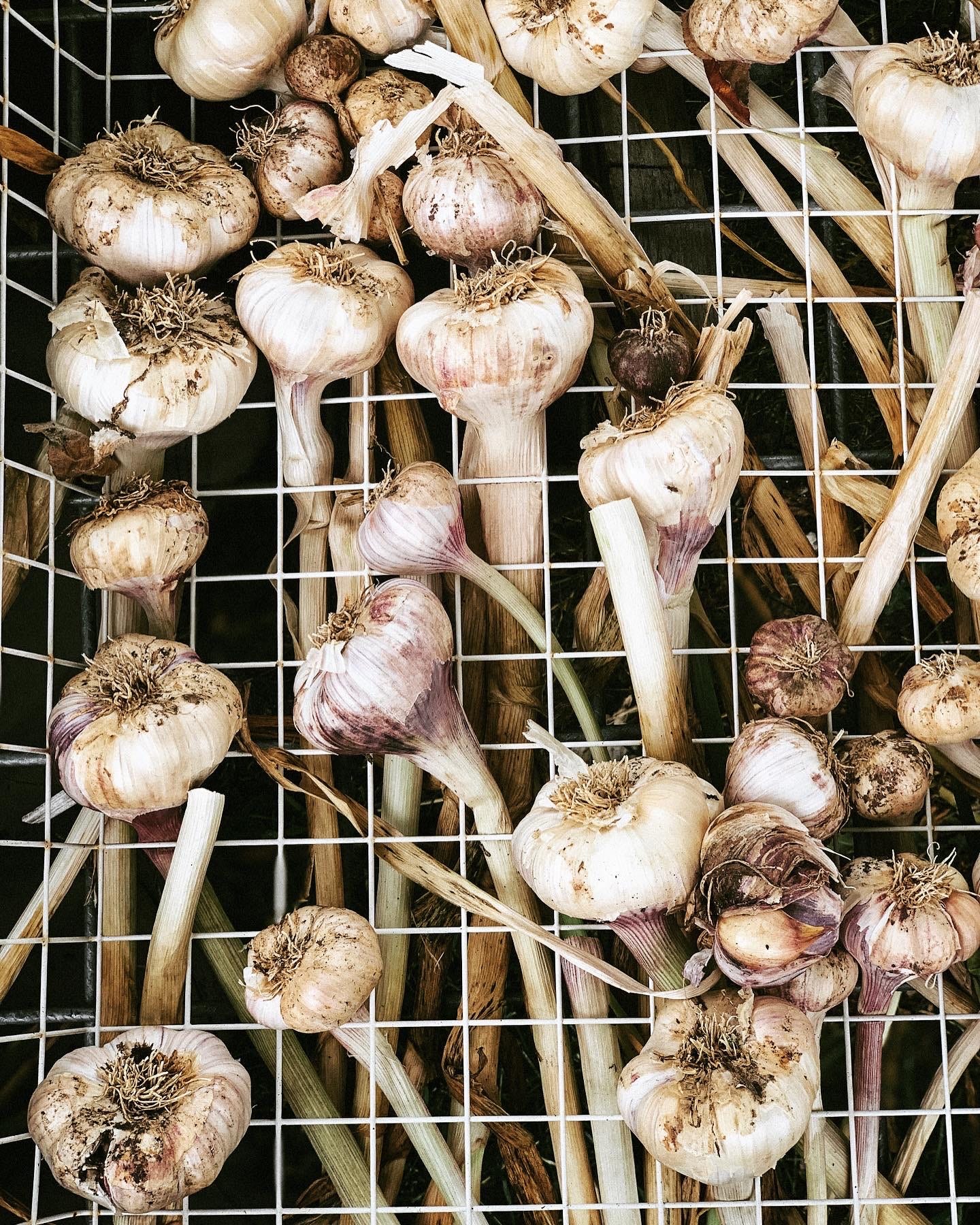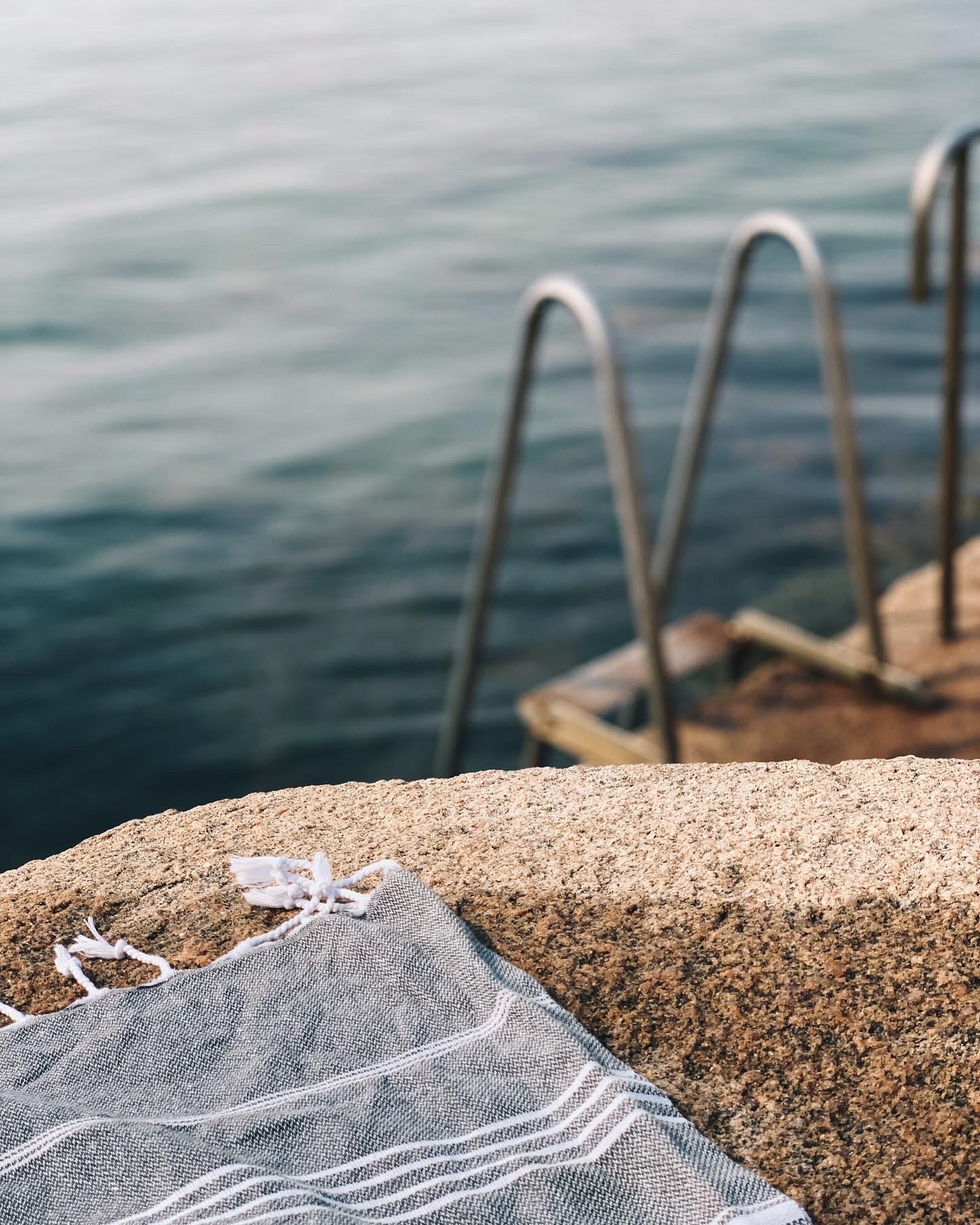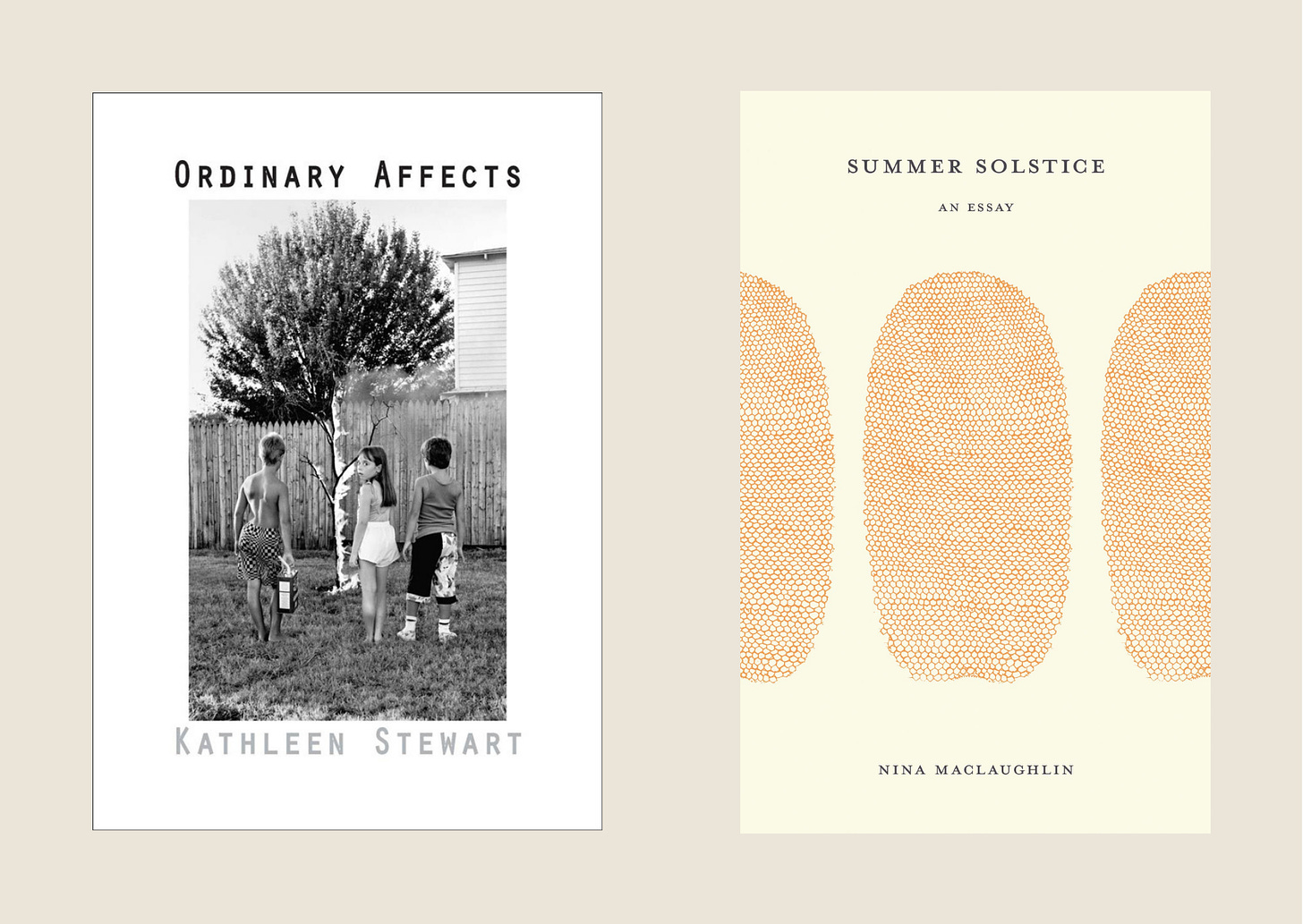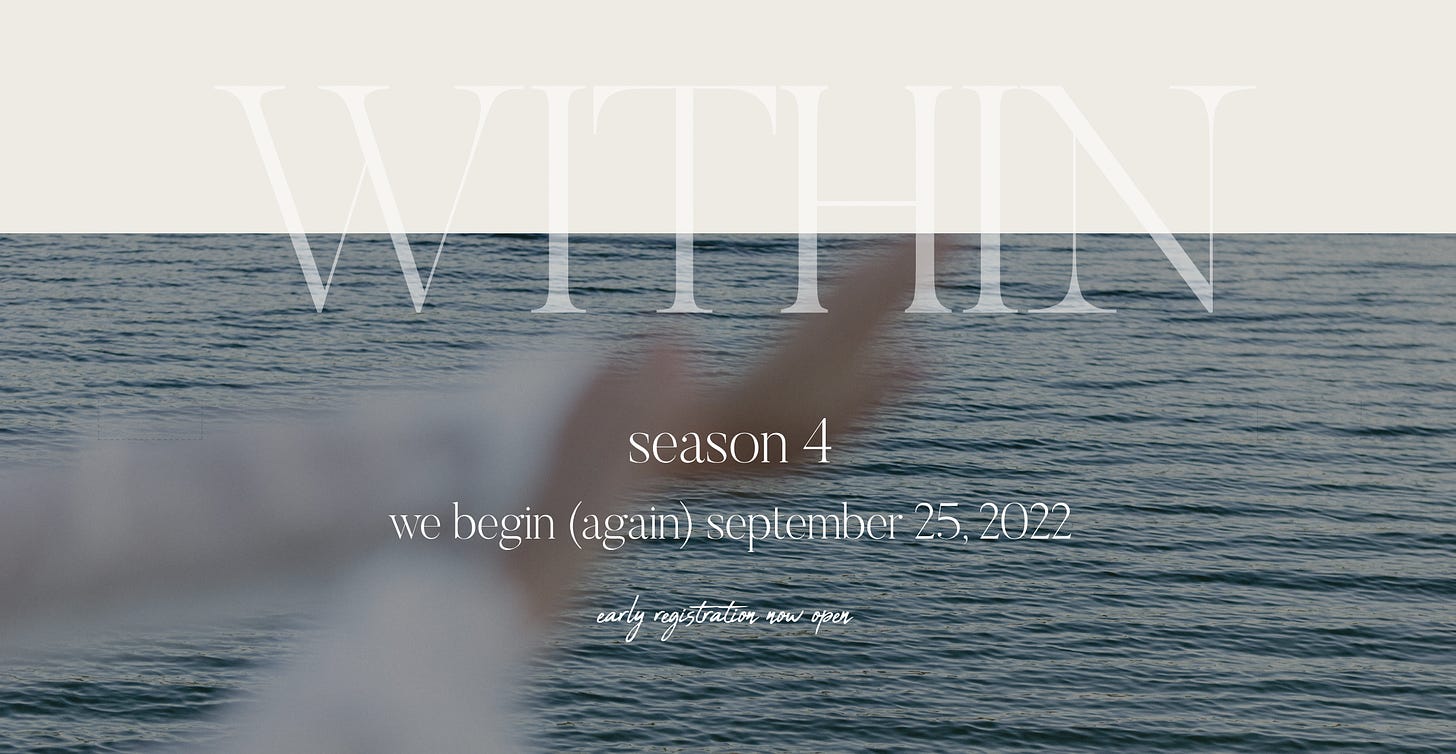ordinary affects
the art of subtraction, modes of attention, bodies of water, and writers on swimming
“I love borders. August is the border between summer and autumn; it is the most beautiful month I know. Twilight is the border between day and night, and the shore is the border between sea and land. The border is longing; when both have fallen in love but still haven’t said anything. The border is to be on the way. It is the way that is the most important thing.”
— Tove Jansson, “Moominvalley in November”

Good morning from Berlin, where I’m here for a few days visiting some dear friends (a visit I’ve been meaning to make since first moving to Sweden). It’s early but the air is already thick with a heavy heat they say will give way to thunderstorms, and I’m about to step out for a run—my favorite way to experience a new city in my body.
Something about the liminal shoulder season of August (in which I tend to mourn the summerness that is not yet over) has me reflecting on what, in the mundaneness of everyday life, is asking to change. Though I’m just listening and have no answers yet, I’m becoming a student in the art of subtraction (trying to cut 30,000 words from a manuscript will do this to you—eek).
I am learning that subtraction is not just erasure. Breathing space opens when excess gets trimmed, makes clear what stories and feelings have been crowded for air. Subtraction is also not restriction. It has taken me years to realise this. Subtraction makes you pay attention in new ways.
Two literary examples of the art of subtraction imprinted upon me this month I think you, too, might appreciate — anthropologist Kathleen Stewart’s Ordinary Affects and writer Nina MacLaughlin’s Summer Solstice. Both are short, written in sparse fragments, with breathing room that expanded my sense of how words can live on a page and in the body at once:
Ordinary Affects is, as Stewart puts it, “an experiment, not a judgment,” a lyrical quilt of ordinary moments, objects, sensations, a compelling call to pay attention to the small vibrancies of everyday life which are not the margins of political life but the very stuff of it. If you are feeling disembodied and dislocated amidst the surges and seachanges of our world, I recommend it. Stewart writes:
“Ordinary affects are the varied, surging capacities to affect and to be affected that give everyday life the quality of a continual motion of relations, scenes, contingencies, and emergences… They happen in impulses, sensations, expectations, daydreams, encounters, and habits of relating, in strategies and their failures, in forms of persuasion, contagion, and compulsion, in modes of attention, attachment, and agency, and in public and social worlds of all kinds that catch people up in something that feels like something.”
Nina MacLaughlin’s Summer Solstice, an extended essay, reads like a poetic and nostalgic ode to the summer’s ordinary affects, with a melancholic distance—a gap between the idea of the season and the experience of it that so resonates with my own relationship with summer. Moments and moods, images, sensory slices of the ordinary that, arranged together, stand in for so much more.
Reading these back-to-back in conversation has me reflecting on two related things: how I pay closer attention to the ordinary affects that surround me, and how this season lands in my own body. Both of which, I’ve found, have a lot to do with water.

“Since when did humans have the idea that jumping from a high place into a body of water was a fun thing to do?” my nephew asked me, after we had done just that.
It is a good question. Since when?
On my mind lately is water and the strange human draw to be in it, and the way summertime wakes up this magnetism within, beckoning us.
I spent most of my childhood in swimming pools—outdoors year-round in Northern California, later indoors in Oregon, training and racing, tracing the black line back and forth. But living in Sweden has changed my relationship with bodies of water, or rather, my-body-in-water. Most of my swimming now happens in the ocean. My physical movements are subtler. I don’t count yardage. The black line is now a tangle of dark seagrass. I let myself float. I submerge. Air bubbles in my ears mute the buzz of the world above, and in my mind.
My practice in paying attention this summer has been getting my body into water almost daily. Especially when I try to convince myself not to. It’s like writing, or running, or any practice — the resistance inevitably gives way to the experience, which is never anything like the resistance told you it would be.
The water is where I wake up to the hum of ordinary affects that surround me. When I exit, and for the rest of the day, my skin feels more porous somehow, more open to the world. I’m aware of the boundaries of my physical body, where I begin and end, but also the places that have been calcified, walled off, numbed, crowded out.
As Nina MacLaughlin writes:
We enter water and we leave ourselves. Gravity loosens and we swim into a slow trance, we swim into wisdom. And what is the wisdom? It is of being un-separate. It is a temporary return to the unbroken planet, where we exist as both whole and dissolved. In the dark-bright of water, we’re wet at the throat, at the back of the neck, in the ears, on the eyelids, and the water on the skin gives a literal cleansing. We emerge, from waves onto beach, up the shining metal ladder off the side of a pool, onto the twiggy banks of a river, onto a lakeshore surrounded by pine forest, first smoke of campfires rising on the banks, and the world is reset. We return to our selves, separate and distinct once again, severed from the All, with only the memory of that quick glimpse into the mystery of what was.
What is your relationship to water, bodies of water, your-body-in-water?
Here are a few writings on water/swimming for you to dip into and swim around in, and further down, a water-inspired writing prompt for you:
Notes on Swimming, #1 :: photographer Gregory Crewdson on open water swimming as artistic expression and swim routes as memory palaces
‘The Anthropology of Water’ :: anthropologist Andrea Ballastero marks out a field for the human study of water, attending to “molecular, embodied, ecosystemic, and planetary issues” of water and water justice
The Swimmers by Julie Otsuka :: ostensibly about a community swimming pool and its recreational swimmers, this novel is an aching meditation on ageing, loss, memory, mothers and daughters
The Chronology of Water :: an old favorite, I love how Lidia Yuknavitch integrates her writing and swimming selves, with water as a central metaphor
Small Bodies of Water by Nina Mingya Powles :: I haven’t read this one yet, but the blurb shot it on the top of my TBR pile
Why We Swim :: Bonnie Tsui’s blend of journalism & memoir examines five rationales for swimming: survival, well-being, community, competition & flow
An excerpt from Summer Solstice in The Paris Review by Nina MacLaughlin
Swimming offers an approximation of reentry. Is it possible to enter a body of water and not emerge altered in some way? Even to get rained on can change the vibration of an afternoon. In water, one can surrender oneself in a way not possible on a hill, or canyon, or dune. What I like best is giving my weight to it, the possibility of being held and the possibility of drowning.
If you have any writings or reflections on water/swimming you’ve encountered, experienced, and want to share, please do!
writing prompt:
What bodies of water have held and dissolved you in this season?
Try approaching this prompt from the lens of ordinary affects: noting the small details, sensory experiences, affects stirred, seemingly unrelated memories conjured. Write in fragments, “surges” as Kathleen Stewart would call them. Resist the urge to over-narrativise or explain. Let seemingly unrelated slices of experience have breathing room to speak to one another. Submerge.
WITHIN returns for a new Season
Registration for WITHIN Season 4 is now OPEN!
WITHIN—my series on embodied writing, somatic practice, and experiments in creative expression—returns for its fourth season, and I’m thrilled to extend a warm invitation to you!
Our three month journey—September 25 to December 14—takes us from Fall Equinox into the cocoon of winter and the Swedish festival of light, Santa Lucia (& in the Southern Hemisphere the reverse—from Spring Equinox onto the doorstep of Summer Solstice). These are especially potent times for rewriting stories, initiating or returning to practices & rituals, and tuning in to the ongoing shifts in inner & outer landscapes.
Labs (yoga, meditation, breath + writing) take place every other Sunday and monthly Circles (select Wednesdays) make space for community connection, ritual, and deep listening. You may participate live or via recordings.
More details, FAQ’s, and registration can be found here.
And for all past participants of WITHIN: a warm invitation to our SUMMER REUNION August 21, which includes a water-inspired Yoga Nidra, embodied writing prompts, and community circle.
I wish you a nourishing border season, time spent in water, and abundant breathing room.
With heart,
Allie






Yes this! Being in the water whether swimming fast head down or head up looking around is like a gateway for me to another place